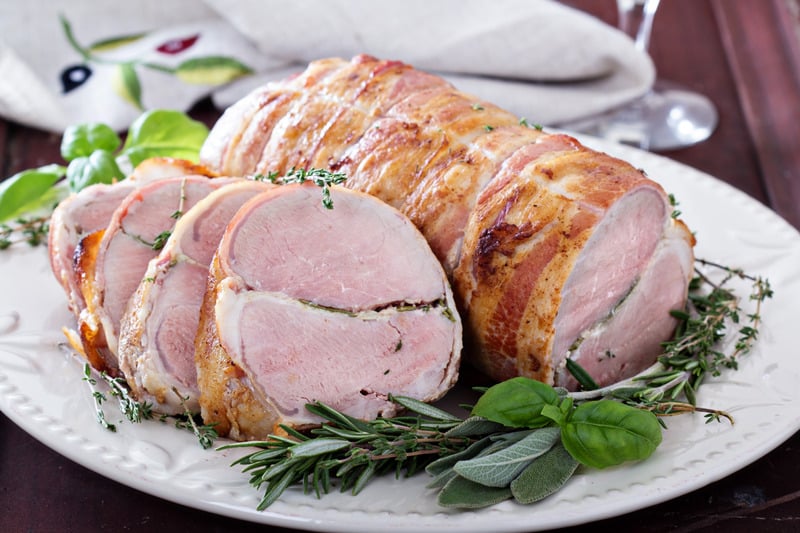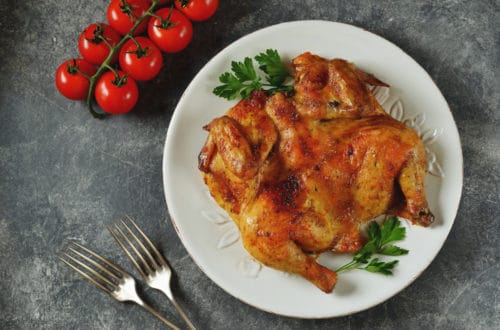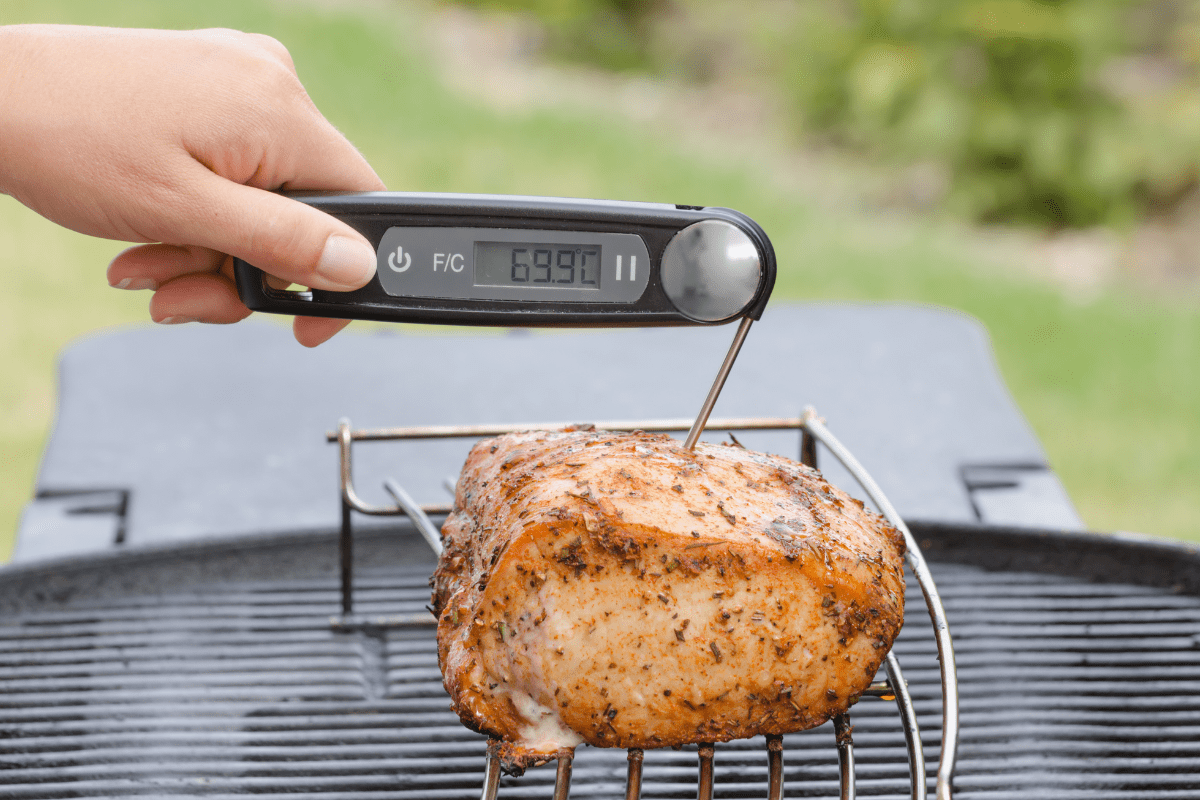For many years, it has been recommended that pork be well cooked and showing no sign of pink before eating. This was even advised by the USDA up until 2011. However things have changed and pink pork is well and truly on the menu.
So how rare can we cook pork? Pork can now be safely eaten when served medium rare, or ‘pink’. This is achieved when an internal cooking thermometer reaches 145 °F in the thickest part, and then the meat is left to rest for 3 minutes after cooking.
We will now look at the reasons for this change, and see how we can begin to enjoy our pork being succulent and juicy!
Shouldn’t Pork Be Cooked Well Done?
Back in the day when I was a young man growing up and then learning to cook, I always remember my parents saying “make sure there is no pink showing” when pork was being cooked for dinner.
For the last 30 years I continued to follow that voice in my head whenever I cooked pork, for fear of getting sick and giving my Mom the chance of saying “I told you so”.
Even as a butcher, and learning that times have changed and it is no longer necessary to cook the life out of pork, that little voice nagged away and I continued to cook it well done.
Well, after reading many reports and seeing lots of recipes showing ‘pink’ pork, I decided to be brave and live on the wild side – Sorry Mom!
I have to say the difference is amazing!!!
No longer do I have to pile on masses of apple sauce to help the dry, tasteless pork chop work it’s way down. Now a simple seasoning of salt and pepper and the moistness of the meat itself is all that is required for a delicious pork dinner.
My Mom is not so easily converted, and so when pork is on the menu with her, a healthy portion of apple sauce is still required!
SO! What has changed since my parents days of incinerating the sunday pork joint, and what does it mean for the modern day pork eater?
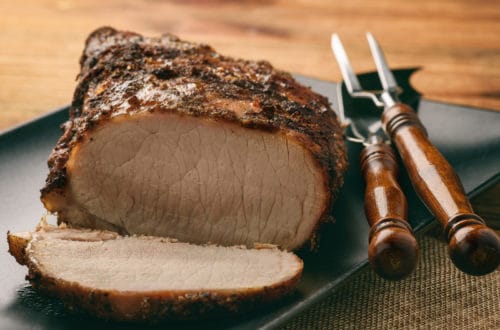
Goodbye Trichinosis
One of the main reasons for my parents fear of undercooked pork was the nasty little illness called Trichinosis which is caused by the trichinella parasite.
Without going into too much detail and potentially putting you off eating pork for life, let’s just say that if you got sick with trichinosis it was unpleasant.
However, it was long ago established that the practice of feeding pigs ‘Slops’ was a major contributing factor in the parasite being present in the pork, and so the industry got strict about the types of food that could be given to commercially reared pigs.
Since that change in feeding practices, the cases of people contracting trichinosis from undercooked commercially reared pork have been virtually eradicated.
Between 2008 – 2012, there were 10 instances of trichinosis in the USA that were attributed to commercial pork, and only 5 of those were attributed to undercooked pork.
Now when you consider that in 2017 the USA meat industry produced over 26 BILLION pounds of pork, you can see why 5 cases over 4 years the threat is considered virtually eradicated.
Just to be clear, we are talking about commercially reared pork. Trichinosis is still a threat from meat produced from homegrown pigs fed on food waste, wild boars, bears and other wild game animals.
You can read more about trichinosis on the Centre for Disease Control & Prevention site if you wish
So What is Considered Medium Rare Pork?
When cooking solid cuts of pork such as chops, steaks or roasts, you can now remove the meat from the cooking process when the internal temperature reads 145 ºF (63 ºC) on a food thermometer inserted into the thickest part of the meat, not touching bone. You MUST let the meat stand for 3 minutes prior to carving or serving, to complete the cooking process.
The trichinella parasite is killed at temperatures above 137 ºF (58 ºC) and with cooking and resting as described above, your pork will have reached approx 155+ ºF, well above what is required to eliminate any risk.
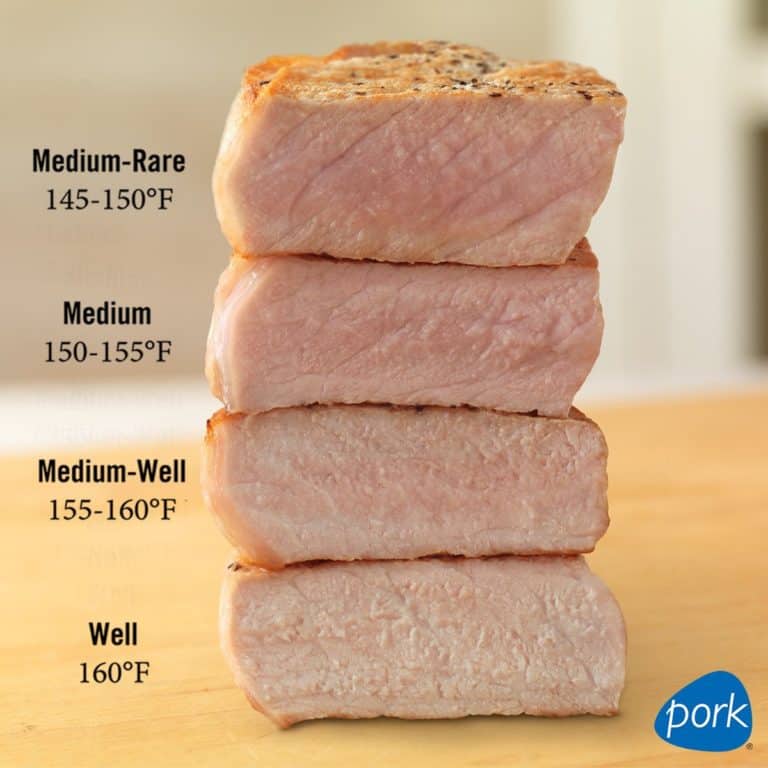
What Are The Benefits of Medium Rare Pork?
If you are still cooking your pork to the same degree as advised by my Mom “make sure there is no pink showing”, then you will probably consider pork to be a dry, chewy and tasteless piece of meat. Hence the heavy dose of apple sauce required!
Well, this is doing pork a diss-service.
Once you begin to cook your pork to the 145 ºF and 3 minute rest method, you will come to realise that your pork steaks, chops and roasts can be as succulent, juicy and tender as any medium rare cooked beef steak.
Admittedly, medium rare may be a stretch too far for those of you that are just venturing into the ‘pink’ pork cuisine, however I urge you to at least compromise and perhaps start by introducing a little less cooking each time, until you find the right amount of ‘doneness’ you can enjoy.
It really is a pleasure to finally enjoy a beautifully cooked pork chop that is moist and tender, and a whole lot cheaper than a rib-eye beef steak.
If you don’t already own one, an instant read food temperature thermometer is an absolute must for your kitchen. This inexpensive gadget will ensure that you have perfectly cooked food every time, and will take away any doubt you have as to whether the food is cooked enough to eat before you get to the overcooked stage.
So Can All Pork Be Cooked Medium Rare?
No, is the short answer to that question.
When we suggest cooking your pork rarer than well done, we are specifically referring to solid cuts of meat such as steaks, chops and roasts.
With roasts, steaks and chops, any bacteria that may be present is only on the surface of the meat, and is killed during the normal cooking process due to the exterior of the meat reaching higher temperatures than the centre of the meat.
If you are cooking any kind of ground pork or sausage, then a higher temperature of 160 ºF (71 ºC) is required.
Any meat that has been put through a grinder for ground meat or sausage has the added risk of bacteria such as salmonella or E- Coli being present. During the grinding process, the bacteria that is present on the surface of most meat can now spread into the flesh of the meat. These bacteria that may now be ‘inside’ the meat, need to be cooked to a higher temperature to be destroyed.
An additional precaution to look out for when buying your meat pre-packed from a store, is to check the label to see if it has been ‘blade or mechanically tenderized’. This is where the packing house will put the meat through a machine that forces small blades or needles into the meat to tenderize it.
Whilst this process is mostly used on beef, if you see on the label that the pork has been treated this way, you should cook it the same way as ground meat (160 ºF) due to the fact that the needles may have pushed surface bacteria into the flesh of the meat.
We have an article about mechanically tenderised meat if you wish to know more.
Time to Embrace the Change!
Ok, so if you are one of the people who currently cooks the life out of your pork, at least you know you now have options.
Hopefully this article has given you the confidence towards trying to enjoy your pork a little ‘pinker’ than you usually do.
It may take a while, and you may not go as far as medium rare, however allowing your pork to retain some of it’s natural juices running through it, will reward you with a tasty, succulent and tender meal every time.
Take yourself out of your comfort zone and you won’t regret it!
